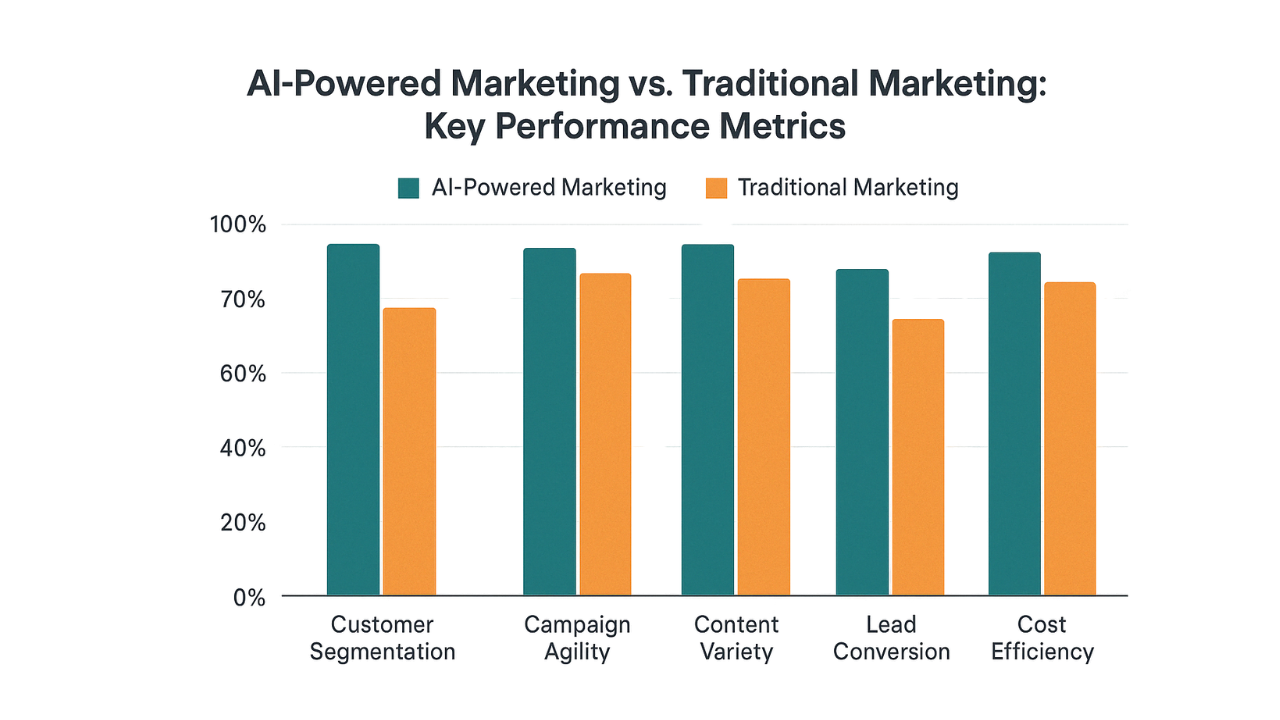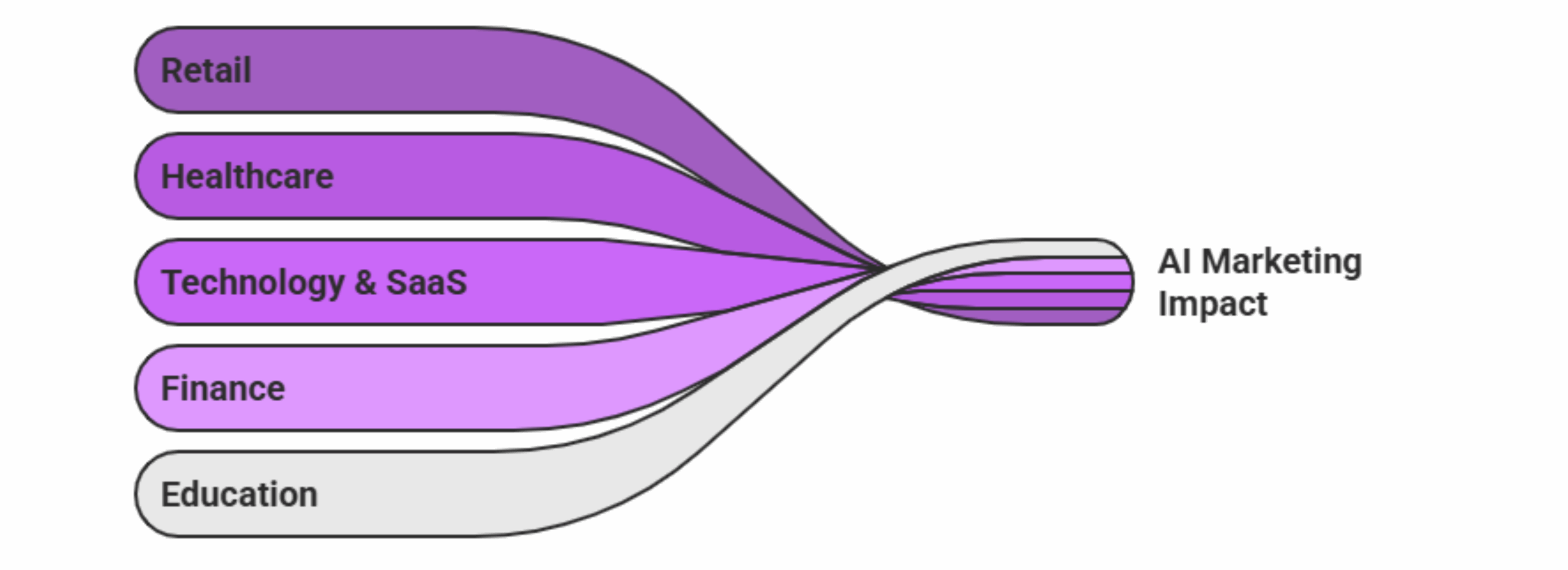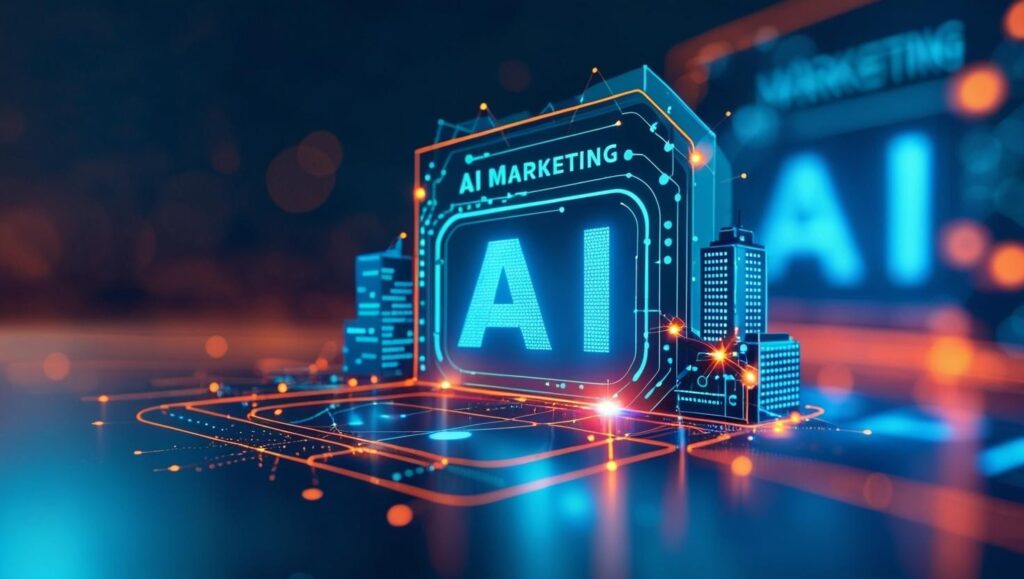In a world where attention spans are fleeting and consumer expectations are sky-high, marketing must evolve or risk becoming obsolete. Traditional marketing, once the cornerstone of brand awareness and customer acquisition, now faces a formidable challenger: AI-powered marketing.
AI isn’t just another tool, it’s a transformative force. Artificial intelligence is reshaping marketing workflows across every industry, from content creation and audience targeting to performance tracking and customer engagement. Understanding this shift is crucial for both B2B and B2C businesses to stay competitive.
This article explores how AI-powered marketing differs from traditional strategies, diving deep into workflow structures, cost models, personalisation capabilities, industry use cases, and real-world outcomes.
The Traditional Marketing Playbook: Reliable but Rigid
Traditional marketing strategies – think TV ads, print campaigns, direct mail, radio spots, and billboards have formed the bedrock of brand communication for decades. These campaigns, often designed months in advance, are broad, static, and primarily focused on brand reach rather than customer specificity.

Strengths of Traditional Marketing:
- Broad visibility and trust-building through mass media
- Proven effectiveness for brand recall and awareness
- Established practices and metrics
Challenges with Traditional Methods:
- High upfront costs: A TV spot or print ad campaign can cost thousands, if not millions.
- Limited agility: Once launched, campaigns are complex and cannot be changed or optimised in real time.
- Low personalisation: Audiences receive the same message, regardless of their interests or behaviour.
- Manual workflows: Research, content creation, A/B testing, and analytics are largely human-led and consume time and resources.
In an era of hyper-personalised, real-time digital interactions, traditional marketing often struggles to meet modern demands.
The AI-Powered Marketing Revolution
AI-powered marketing introduces intelligence into every stage of the funnel. Leveraging machine learning, predictive analytics, natural language processing (NLP), and automation, AI allows brands to anticipate customer needs, personalise experiences, and optimise campaigns on the fly.
Key Capabilities of AI Marketing:
- Hyper-personalisation at scale
- Real-time campaign optimisation
- Automated content generation and media buying
- Predictive lead scoring and customer journey mapping
- Data-driven decisions and insights
From automating social media posts to generating thousands of ad variations based on performance data, AI empowers marketers to operate at speeds and scales previously unimaginable.
Head-to-Head: Traditional vs AI-Powered Marketing

Building on the visual insights, let’s now examine the functional differences between traditional and AI-powered marketing across core areas.
1. Workflow Structure
| Dimension | Traditional Marketing | AI-Powered Marketing |
| Campaign Planning | Manual brainstorming, surveys, and market research | AI-analysed trends, predictive analytics for content & timing |
| Content Creation | Designed by human teams, slow revisions | AI-assisted (e.g., GPT tools), fast multivariate versioning |
| Execution | Scheduled launches, little room for change | Real-time publishing & adjustments based on live performance |
| Performance Tracking | Post-campaign reviews, manual analysis | Continuous monitoring, AI-powered dashboards |
| Optimisation | Happens after the fact, often reactive | Instant feedback loops, dynamic bid/creative adjustments |
Curious how much time AI could save your team?
Try our Workflow Productivity Calculator to see how automation can streamline your marketing operations and free up hours for strategic work.
2. Cost Structure
| Cost Element | Traditional Setup | AI-Powered Setup |
| Monthly Team Expenses | ~$17,000–$25,000 | ~$1,500–$3,000 (tool-based + oversight) |
| Creative Production | High-cost ad agencies or freelance teams | Generative AI tools + 1-2 human editors |
| Customer Acquisition Cost | High due to mass targeting | 30–50% lower through AI segmentation |
Traditional marketing has fixed, high costs with limited flexibility. AI marketing, in contrast, is modular and scalable, offering better control over cost per result.
Why AI Marketing Outperforms: The ROI Perspective
AI isn’t just about doing things faster—it’s about doing them smarter.
Efficiency Gains:
- A marketing team using AI content tools (e.g., Jasper or Copy.ai) can generate 4x the output while cutting content costs by up to 75%.
- AI-enabled platforms (like Salesforce Einstein or HubSpot AI) automatically segment audiences and tailor messages, eliminating hours of manual CRM work.
Performance Uplift:
- JPMorgan Chase reported a 450% increase in ad CTR after using AI-generated copy instead of human-written versions.
- According to McKinsey, businesses using AI personalisation see an average of 10–15% revenue growth.
Want to quantify how much AI can boost your marketing ROI?
Use our AI Marketing Impact Analyzer to estimate potential gains in efficiency, targeting accuracy, and conversion uplift based on your current performance.
Real-Time Agility: AI’s Game-Changer
Traditional campaigns often require weeks of production. When insights are gathered and adjustments are made, the market may have shifted.
AI tools analyse performance data in real time, making micro-adjustments to:
- Ad targeting
- Creative copy
- Email send time
- Call-to-action placement
This agility allows brands to respond instantly to consumer behaviour, seasonal trends, or market disruptions.
Hyper-Personalisation at Scale
Traditional campaigns might create 2–3 message variations for different demographics. AI can produce thousands of unique content pieces, tailored by:
- User behavior
- Purchase history
- Geo-location
- Device type
- Time of day
Example:
An AI-powered email platform might send a discount code to one user at 7 AM, while nudging another at 9 PM with product recommendations—based on their past open times and purchases.
Scalability Without the Cost
AI unlocks scalable personalisation across millions of touchpoints without multiplying operational costs.
Traditional Scaling:
- Add more regions → hire more marketers
- Add new campaigns → outsource creative work
AI Scaling:
- Add more regions → AI translates/adapts automatically
- Add new campaigns → AI replicates successful frameworks with new inputs
For global brands, AI is mighty in orchestrating multi-market campaigns, translating and localising messaging based on audience engagement, not assumptions.
Data-Driven Decision-Making
Traditional marketing often relies on quarterly reports or instinct. AI systems deliver:
- Predictive analytics (e.g., customer churn probability)
- Lead scoring models
- Cross-channel attribution analysis
- Campaign simulations based on budget allocation
AI tools can predict customer behaviour with up to 85% accuracy, empowering marketers to act before a conversion opportunity is missed.
Sector-Wise Impact of AI Marketing: A Closer Look
AI isn’t just a buzzword, it’s being tactically applied across industries to solve real marketing bottlenecks. From personalised product recommendations in retail to student onboarding in education, the results are compelling.

1. Retail: Driving Personalisation and Predictive Offers
Retail has been one of the earliest adopters of AI in marketing. AI is widely used for:
- Real-time product recommendations
- Dynamic pricing
- Inventory-aware ad placements
Amazon, for instance, attributes an estimated 35% of its revenue to its AI-based recommendation engine. This system analyses past purchases, browsing behaviour, and customer preferences to personalise product suggestions—boosting cart size and purchase frequency.
Sephora uses AI via its “Virtual Artist” tool, allowing customers to try products digitally. Combined with AI-driven email marketing, Sephora’s campaigns are timed and tailored to each customer’s preferences and previous interactions.
2. Healthcare: Targeted Engagement and Preventive Outreach
The healthcare sector uses AI to improve patient engagement while navigating strict compliance frameworks like HIPAA.
CVS Health uses AI and machine learning models to deliver personalised reminders about prescription refills, vaccinations, and wellness tips. CVS says these targeted nudges have led to higher medication adherence and better preventive care outcomes.
Moreover, healthcare marketers increasingly use predictive analytics to identify at-risk patients and launch condition-specific educational content, boosting engagement rates across digital channels.
3. Technology & SaaS: Intelligent Lead Management and Content Automation
In tech, especially B2B SaaS, AI enables more intelligent funnel optimisation:
- Predictive lead scoring
- Content personalisation based on user interaction
- Automated campaign testing
IBM Watson Advertising integrates AI into digital ad strategies, including real-time creative optimisation. IBM also uses its tools internally to segment and engage leads with personalised, data-backed messaging, improving campaign efficiency.
Adobe’s marketing team uses Adobe Sensei to deliver personalised website content dynamically, optimise email sends, and improve customer journey orchestration across multiple channels.
4. Finance: Hyper-Targeted Customer Journeys and Smarter Copy
AI adoption in finance is rapidly growing, especially for customer acquisition and retention.
JPMorgan Chase deployed AI copywriting tools to improve the performance of their digital ads. In one internal test, AI-generated ad copy outperformed human-written versions, leading to a 2–5× improvement in click-through rates. This outcome led the bank to sign a multi-year agreement to use the AI platform more broadly.
American Express uses AI to predict customer churn and suggest personalised card offers, maximising customer lifetime value while reducing acquisition costs through precision targeting.
5. Education: Enrollment Optimisation and Chatbot Support
In higher education, AI increases enrollment conversion and student retention.
Georgia State University implemented an AI-powered chatbot called “Pounce” to help students complete enrollment steps. This bot responded to thousands of questions during admission cycles and contributed to a 22% increase in freshman enrollment and a 21% reduction in summer melt, according to published results.
EdTech platforms like Coursera use AI to recommend courses based on user history and learning behaviour, improving course completion rates and driving re-engagement through personalised outreach.
AI: More Than Automation—It’s Strategic Evolution

AI-powered marketing isn’t just about performing traditional tasks faster – it enables a completely new way to think, operate, and grow.
- Traditional marketing relies on past performance. AI anticipates future intent.
- Traditional campaigns speak to segments. AI engages individuals.
- Traditional analytics gives insights. AI delivers recommendations and action.
The result? Brands that integrate AI save time and unlock a level of scale, agility, and intelligence previously impossible.
In a marketplace shaped by personalisation, speed, and data, AI is the only toolset that truly keeps pace with the modern customer.
Ready to evolve your marketing strategy? Let’s turn AI from a buzzword into your best-performing team member.
Explore AI-driven solutions at NoCrew. Get in touch with us.


